Thick, dark forest. Tiny wooden houses, with smoking chimneys. Snow on the ground. A blanket of trees hiding monsters deep in its folds.
We were in Germany, in a mysterious area called Saxon Switzerland. Yes, Saxon ‘Switzerland’ is in fact in Germany. It’s south of the city of Dresden, part of the huge Sächsische Schweiz National Park. We were starting a walk, a 110km trail called the Malerweg (here’s our Malerweg guide).
It was Spring in Saxon Switzerland but you wouldn’t know it. Crazy cold weather had swept Europe. Our weather apps were saying -10. We’d arrived to the trailhead town of Pirna just as little snowflakes had begun to fall and settle on the ground.
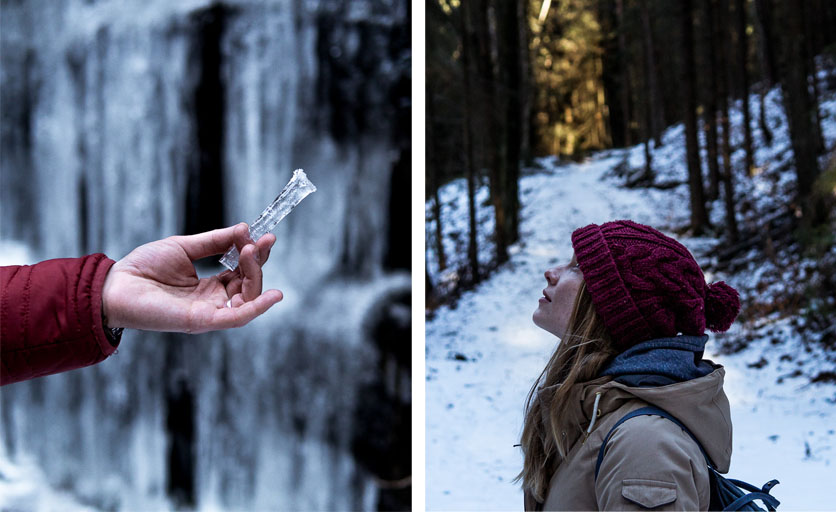
You might wonder why a piece of Germany is called Saxon Switzerland, an entirely different part of Europe. It’s the same oddity over the nearby Czech border too: it’s called Bohemian Switzerland there. They’re essentially nicknames: Bohemian and Saxon Switzerland are called that because they remind people of the magical Swiss landscape.
Why? Because these national parks are more than just misty forest. They’ve got mountains.
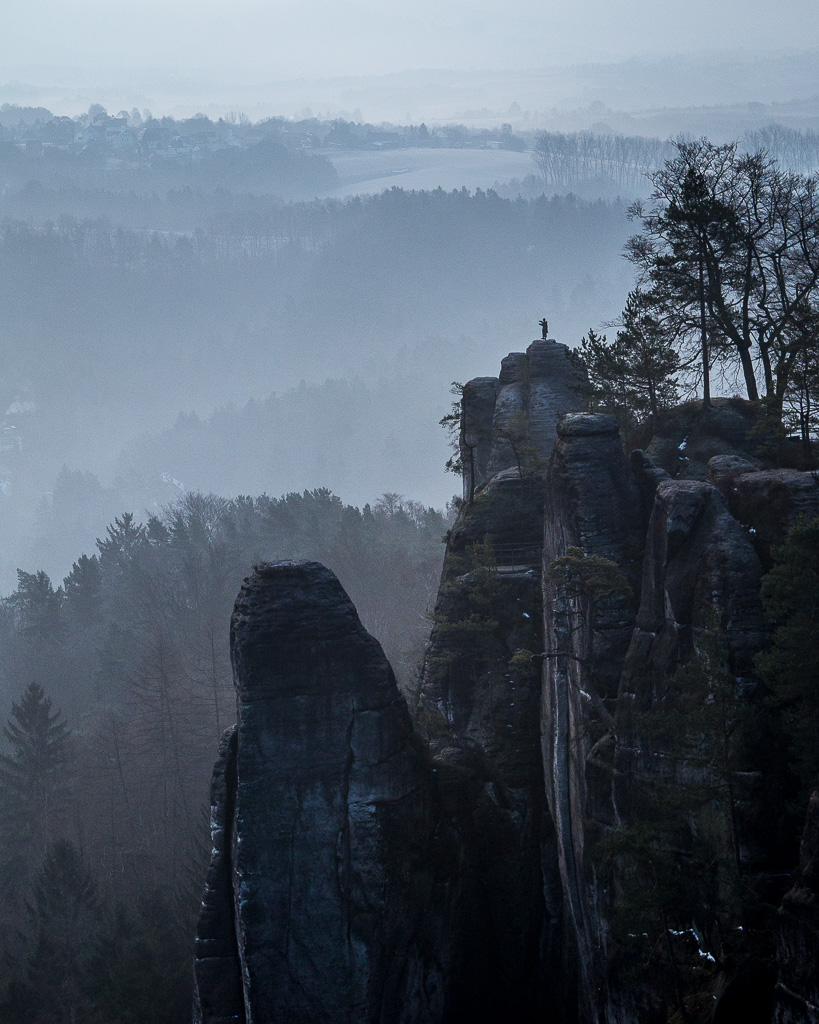
That’s right, giant sandstone karsts dominate the landscape. But weirdly they’re pretty well hidden: travelling here from Dresden, there’s not even a hint of mountains. And internationally Saxon Switzerland is not particularly well-known – Germans seem to know all about it, but other people don’t. We didn’t, until now.
And from that first snowy step, we were spellbound by Saxon Switzerland. The mystical forests of cedar, pine and fir, the timbered villages, the deep rock gorges where everything was covered by an icing of snow. The trees standing silent and white, the streams solid ice. We passed waterfalls hung frozen in mid-fall.
It was a fairytale, Narnia, a winter wonderland – whatever you want to call it.
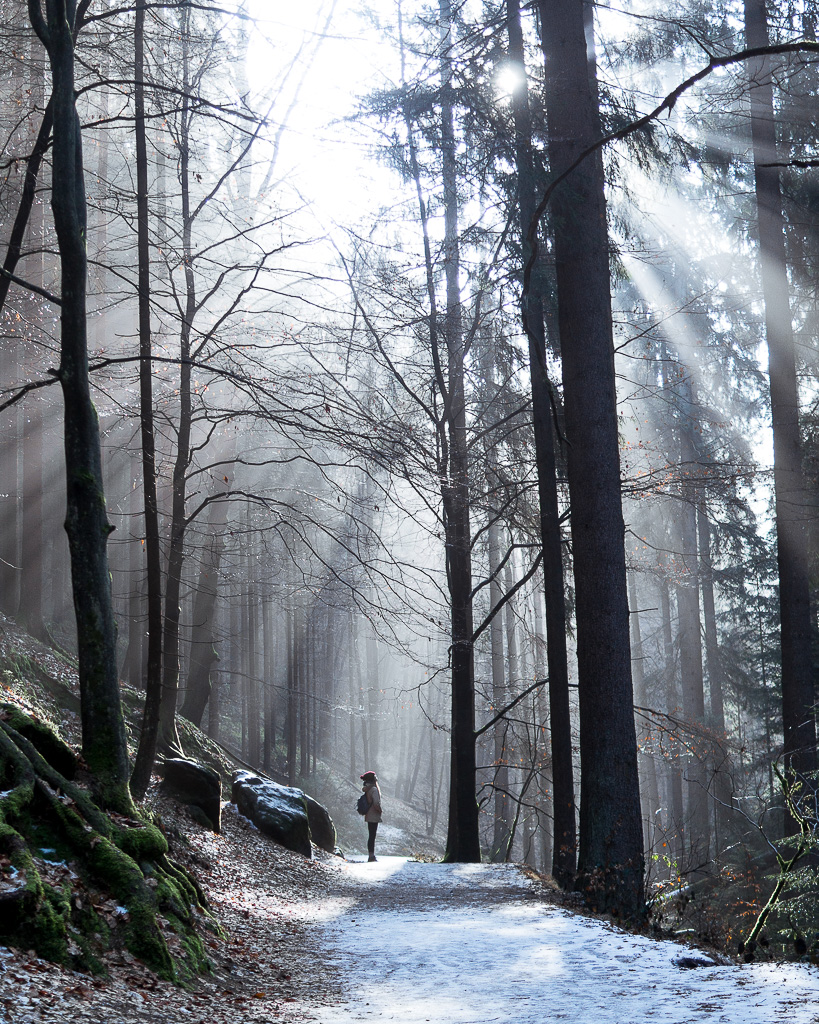
And then there are these mountains. Hidden at first, you see them only once you hike into the National Park. Giant buttes and spires of sandstone, sheer rock looming out of the trees.
They are the gems of Saxon Switzerland, even with their own names: Bastei, Schrammsteine, Affensteine. Monsters in the mists.
Your first question might be ‘where is Saxon Switzerland?’ But what it is is far more exciting.
Our choice of the unmissable places of Saxon Switzerland:
The Bastei bridge
The top tourist site in all of Saxon Switzerland. About 1km from the village of Rathen, big coachloads of people turn up to see and walk along the nineteenth century bridge, built 200m above the Elbe river between two jagged 1-million-year-old rocks. It’s an amazing sight!
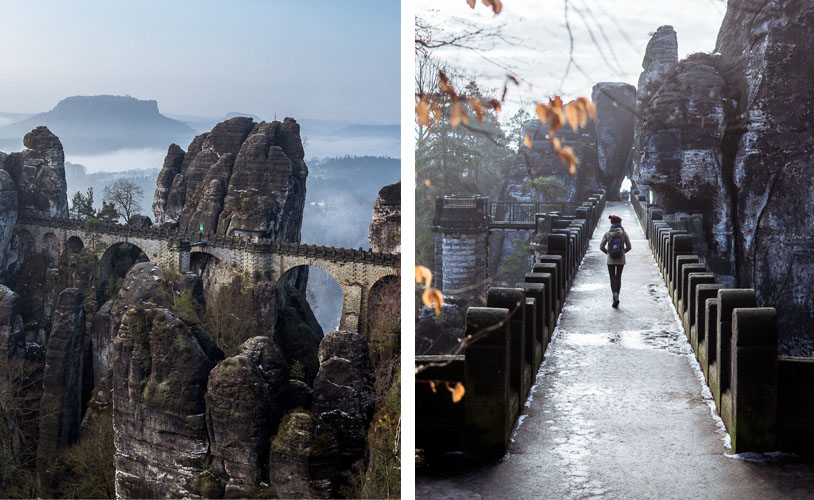
We even spotted the Bastei bridge in the Wes Anderson film The Grand Budapest Hotel!
Schrammsteine
A whole rock formation that has its own trail network to get up and along the ridgeback. We timed it so we were scrambling up its steel ladders for sunset, and it was achingly beautiful. Also achingly cold.
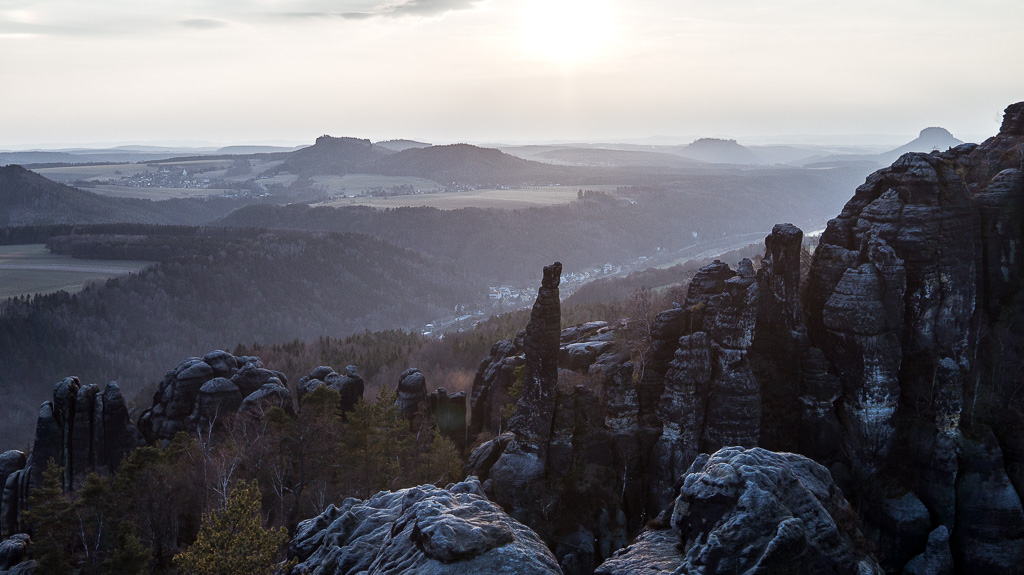
Kuhstall
A huge natural stone arch which you can climb to the top of. From there you can get the best view of the giant sandstone buttes standing out in the forest. There’s also a fun tunnel you can squeeze through to get up there (optional).
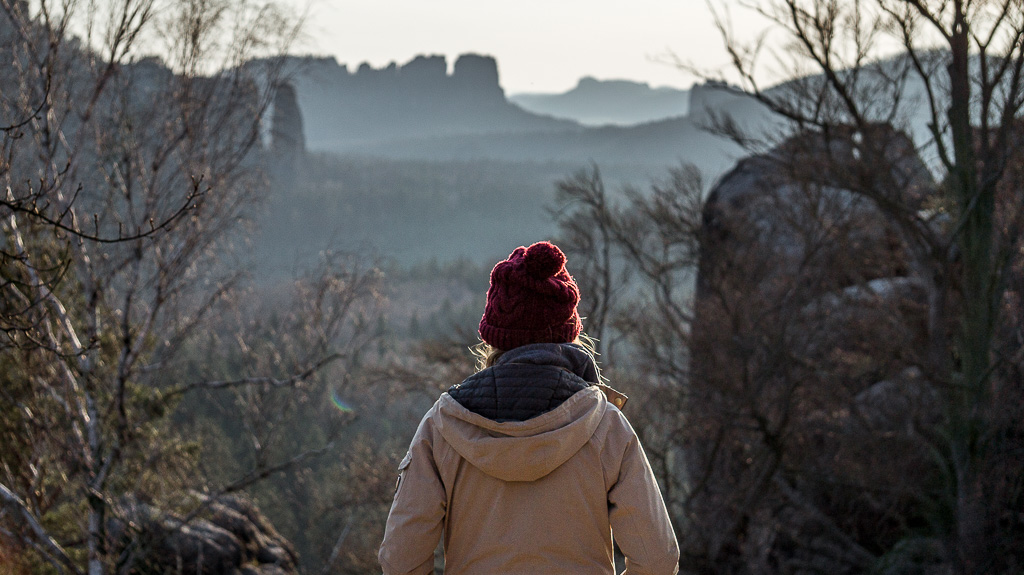
Kipphornaussicht
This is a viewpoint near the end of the Malerweg. There’s a bench and from it you see Germany on the right, the Czech Republic on the left, and the river far, far below.
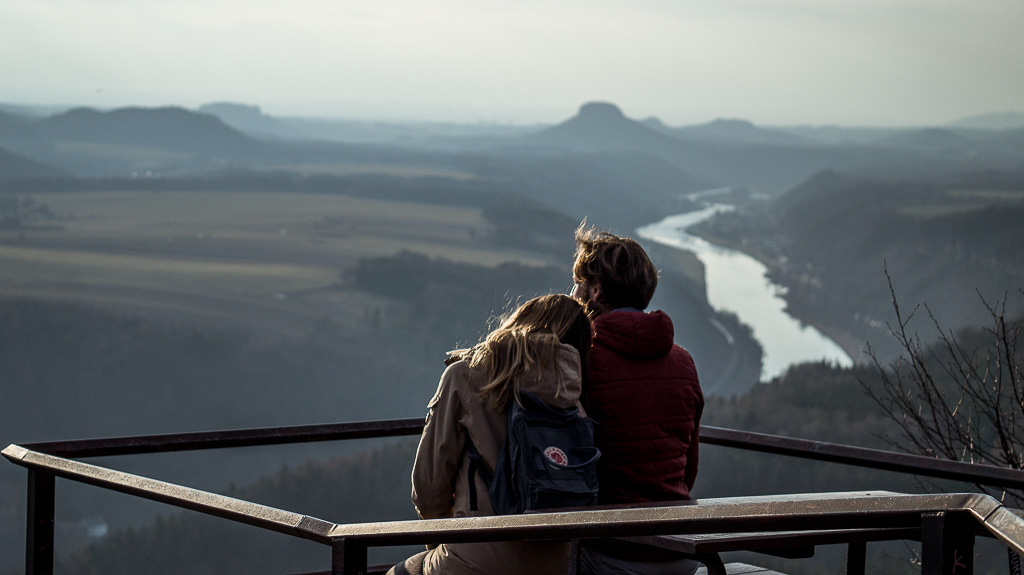
Schmilka
The prettiest village on the Malerweg, wooden timbered and fulfilling all your pastel-coloured dreams! It has a bakery, a brewery with beer garden, a water mill and a guesthouse. And it’s accessible from the other side of the riverbank only by steamboat, which is frankly darling isn’t it?
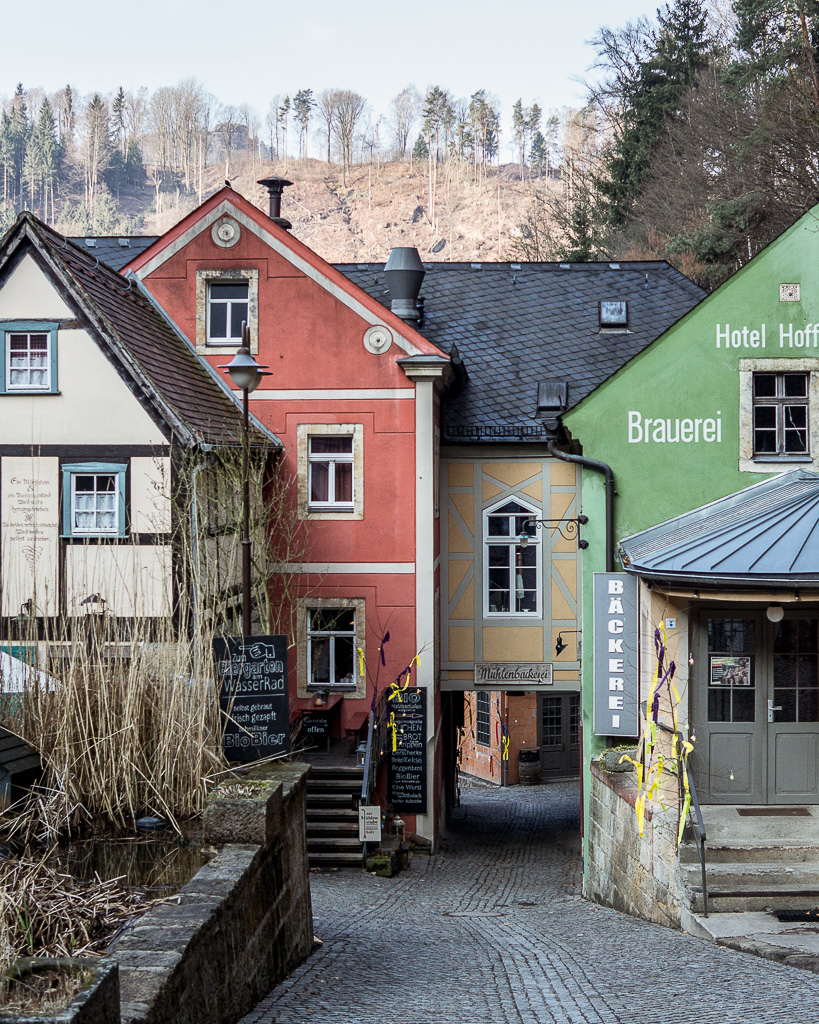
Czech border
Only 200m walk from Schmilka you can cross over into the Czech Republic – just because you can. There’s a deserted border control you walk past and then you’re there, in Bohemian Switzerland.
Where is Saxon Switzerland? The essential info:
- Getting here from Dresden: regular trains from the city to pretty Pirna, the start of the Malerweg walk. Or stay on the train to the lovely river villages, the biggest of which is Bad Schandau.
- The Malerweg: it’s the best trail in the Park. Read our guide on walking the Malerweg here
- Getting around the National Park: as well as road access, a public bus and tram dings its way through some of the Sächsische Schweiz national park, dropping off at different trailheads. The tram goes from the village of Bad Schandau to the Lichtenhain Waterfall and it’s dinky cute
- Useful places to stop: Bad Schandau and Hohnstein both have big shops and amenities.
- If you’re short on time: stay on the east side of the river for the best landscapes and landmarks.
- Maps: We walked the Malerweg, but there are trails criss-crossing the whole Park, all signposted. There are loads of maps in the Pirna tourist information office. We got Nationalparkregion Sächsisch-Böhmische Schweiz N°17 and it was our extremely informative German best friend.
- Where to stay: There’s campsites but also guesthouses and Aribnbs in the villages. There is a tourist tax to be paid upon arrival (cost differs, we paid €5 per night for a B&B). Stadt Wehlen is particularly lovely and well-situated.
- Language: English is spoken, but as always some words in German often helps and is appreciated.
Do you have any questions for us, beyond ‘hang on, where is Saxon Switzerland?’ Leave us a comment below and we’ll answer.
Pin it:
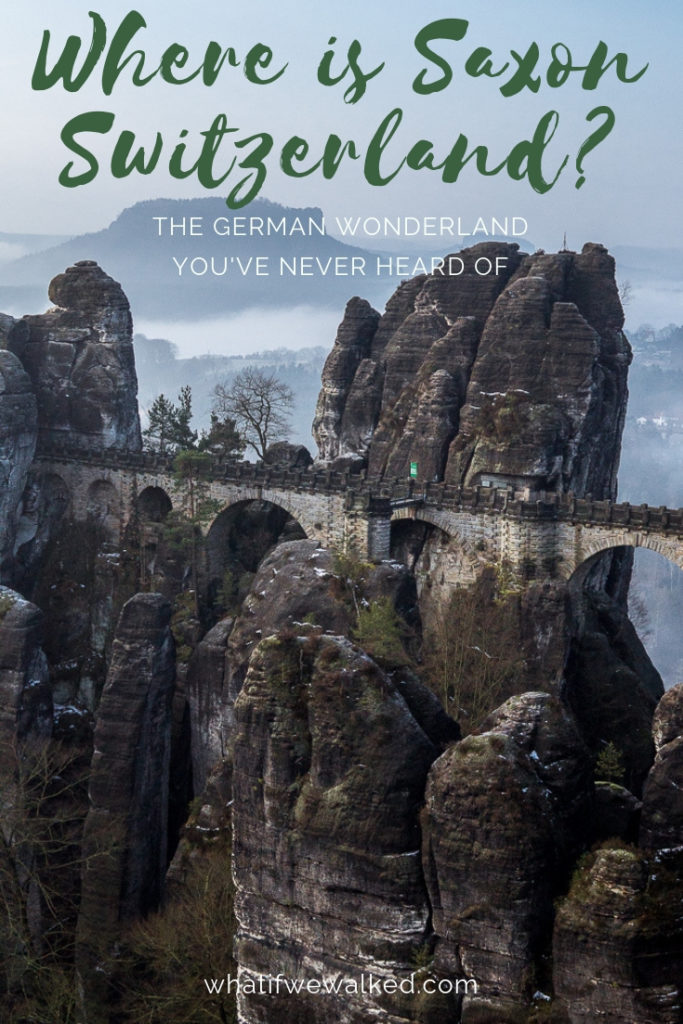

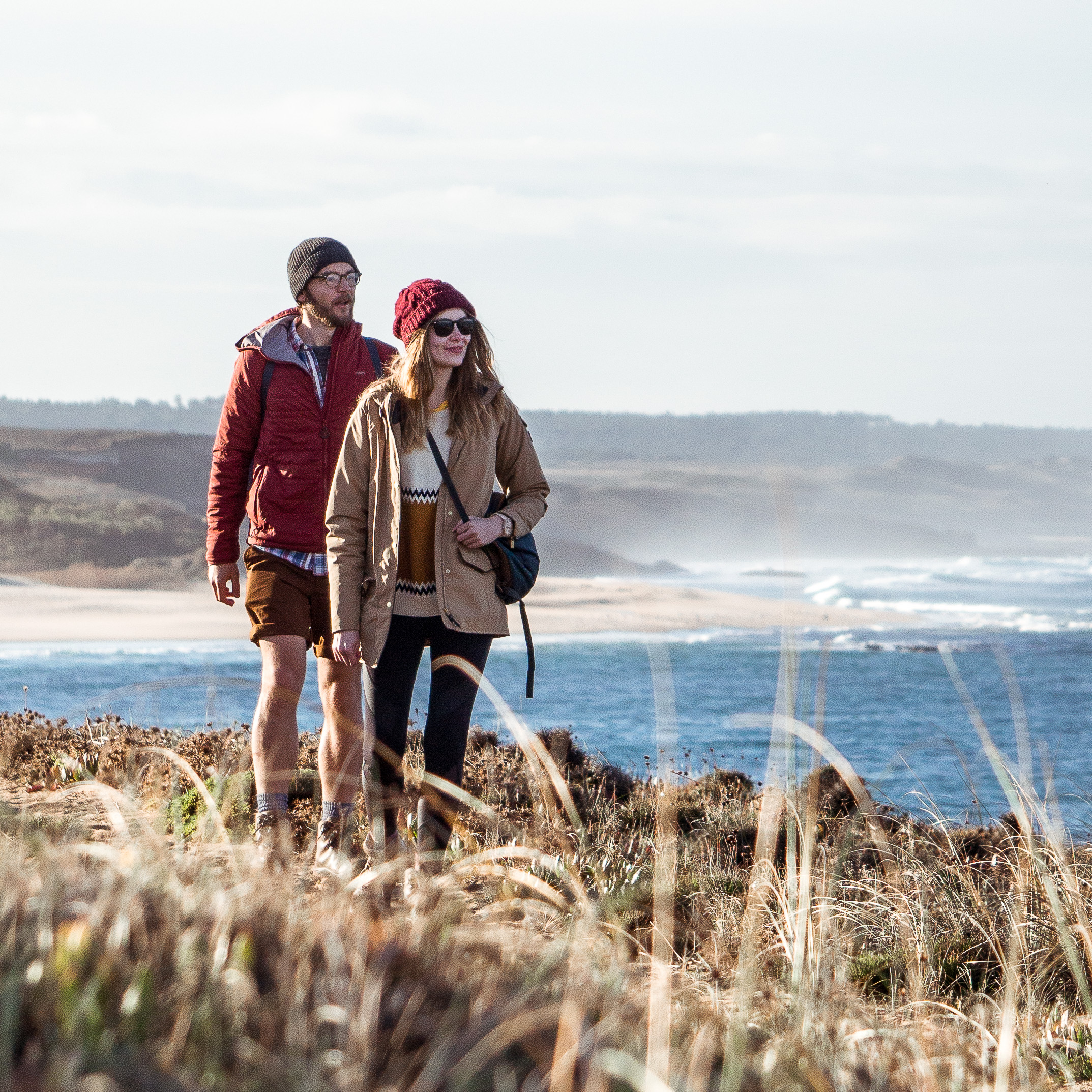
I love the mistiness of the light and colours in this magical winter wonderland of a blog. You’re right – this isn’t a well known area at least in the UK and during the beast from the east. I would be interested in hearing about whether you encountered others walking this trail.
Thank you John! At the time of the year we saw very few people on the trails. At weekends there were people out hiking, but during the week there was nobody. We were really walking just before the hiking season, which we would highly recommend. There are still plenty of villages with places to eat and drink along the way to not get caught out!
Thank you for your detailed explanation.
I am planning for solo traveling. I am concerned about the stay and the things I needed for 5 days (I am planning to hike for 5 days).
Hello,
Thank you for your lovely writeup.
I would like to ask you about the stay for five days.
Hi there
What a fabulous website you have created! A group of four of us are traveling from New Zealand next year to walk the Malerweg. Unfortunately our time constraints preclude us from walking the whole trail. Also, when travelling we have found it much better to stay several nights in one place rather than move from day to day. So…
The question: where would be best for us to base ourselves for 4 nights? We would like to take in as many of the highlights a possible and return to our accommodation each night. You say there are trains and buses easily accessible from the trail so I think this is what we will do.
I look forward to hearing from you.
Cheers
Bill
Hi Bill, that’s very kind of you, thank you for getting in touch.
Your best bet is to base yourself in Bad Schandau and walk out from there to the main sights. Get yourself a veryhandy hiking map from the tourist office in Pirna before heading out to Bad Schandau, and this way you can make use of all the paths to link up parts of the Malerweg. Happy planning and enjoy what is a fantastic walk!